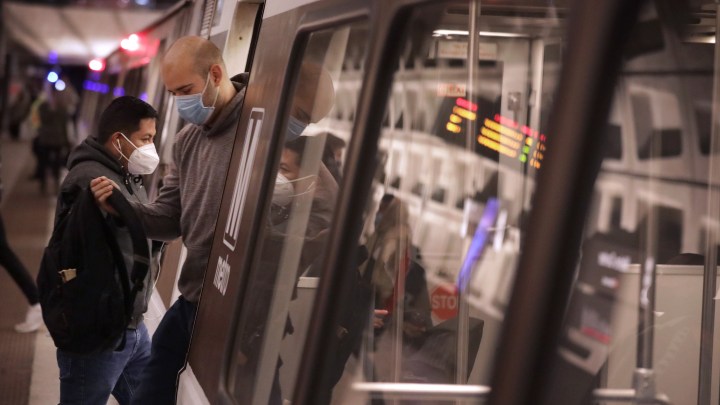
Budget shortfalls mean rethinking mass transit funding and strategies
Budget shortfalls mean rethinking mass transit funding and strategies

Metro buses in Washington, D.C., started charging for rides again. The fares had been waived since March, letting passengers board through the back doors to keep drivers safe from COVID-19.
Collecting payment again is a sign of how transit systems are just trying to hang on until things go back to normal or, more accurately, the new normal. Things may be different even after the pandemic because people are moving out of cities and office culture is changing. Transit systems may have to adapt.
In this pandemic, ridership is down in major cities: Washington Metropolitan Area Transit Authority’s Metrorail is down about 86% from 2019; Bay Area Rapid Transit in the San Francisco Bay Area is 82% below its baseline; Boston‘s subway is down about 75% from its pre-pandemic numbers; and New York City’s Metropolitan Transit Authority subways are down about 71% from last year.
But passenger levels on mass transportation had been falling long before the pandemic. In the last decade, companies moved away from downtown districts and gas prices fell. Uber and Lyft became Uber and Lyft.
Cramming onto a bus or train became less appealing, said Hayley Richardson with TransitCenter, a mass transit think tank.
“We know that people that can afford it will opt out if they can,” she said.
Richardson added that many of the budget cuts transit agencies are proposing could create annoyances that would make it harder to coax those riders back.
“We have a chance to build back transit better than before,” she said. “But only if we learn the lessons about why transit ridership was declining.”
One way to keep money and service moving is to rely more on local taxes and tolls, which already make up at least half of most transit budgets. For instance, New York City lawmakers recently proposed a $3 surcharge on package deliveries.
“They need revenue streams that are new, not taking from other important streams,” said Mitchell Moss, who directs New York University’s Rudin Center for Transportation Policy & Management.
Another way to lure passengers is to invest more in the areas that have held steadier, even during the pandemic. In New York City, ridership on local buses was down about 40%, compared to about an 80% drop on pricier commuter rails that bring workers from the suburbs.
Ian Savage, a transit economist at Northwestern University, said the pandemic is a good reminder about the people whom mass transportation is intended to serve.
“The core of what transit is providing is services to essential workers, and these have primarily always been on bus-based systems,” Savage said.
Experts agree that transit agencies have to do more than just hang in there — their systems need a makeover to get back on track.
There’s a lot happening in the world. Through it all, Marketplace is here for you.
You rely on Marketplace to break down the world’s events and tell you how it affects you in a fact-based, approachable way. We rely on your financial support to keep making that possible.
Your donation today powers the independent journalism that you rely on. For just $5/month, you can help sustain Marketplace so we can keep reporting on the things that matter to you.

















